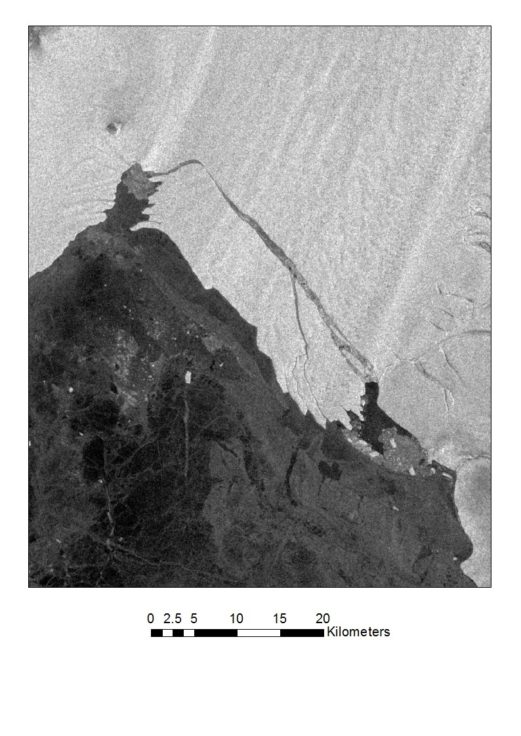Latest satellite images reveal a new 100-square-mile iceberg emerging from Antarctica’s Pine Island Glacier. The calving event did not come as a complete surprise, but is a troubling sign with regards to future sea level rise.
Pine Island Glacier (PIG) is the fastest melting glacier in Antarctica—one that’s responsible for a quarter of the frozen continent’s ice loss, around 45 billion tons of ice each year. Satellite images taken on 26 September show an open-water gap emerging between the ice shelf and the iceberg, which is about two thirds the size of the Isle of Wight (103 square miles or 267 square km).

The new iceberg appears to be quite unstable, producing a batch of smaller icebergs as it slowly drifts out to sea. The new berg is not nearly as big as the one that calved off the Antarctic Peninsula’s Larsen C ice shelf a few months ago—an enormous chunk of ice that measures about 2,240 square miles (5,800 square km).
This new calving is significant because, despite the fact that the ice shelf has been thinning for decades, there has been no systematic retreat of the ice front since it was first observed in 1947.Dr Robert Larter, a marine geophysicist at British Antarctic Survey (BAS), who flew over the PIG rift last season during his research cruise with the German Alfred Wegener Institute, explains:
“What we’re witnessing on Pine Island Glacier is worrying. We’re now seeing changes in the calving behaviour of the ice shelf, when for 68 years we saw a pattern of advance and retreat resulting in the calving of a single large iceberg which left the ice front to approximately the same place. The calving of icebergs in 2001, 2007 and 2013 are well documented. Each calving event returned the ice front to more or less the same position and the ice shelf flowed into the sea again. But with continuing thinning it was clear that sooner or later there would have to be a change to this pattern – and this is what we are witnessing now.”
This change started with the 2015 calving event, which resulted in retreat of the northern part of the ice shelf about 20 km beyond its previous most landward position and reorientation of the ice front. Previously the ice front had always been aligned almost north-south and suddenly it changed to an approximately NE-SW alignment. The new calving position and ice front orientation were controlled by a new rift which had appeared in the ice shelf only about a year earlier. A second, parallel rift had formed further upstream at the same time and it is this one which has controlled the latest calving event.
Dr Larter continues: “If the ice shelf continues to thin and the ice front continues to retreat, its buttressing effect on PIG will diminish, which is likely to lead to further dynamic thinning and retreat of the glacier. PIG already makes the largest contribution to sea-level rise of any single Antarctic glacier and the fact that its bed increases in depth upstream for more than 200 km means there is the possibility of runway retreat that would result in an even bigger contribution to sea level.”
